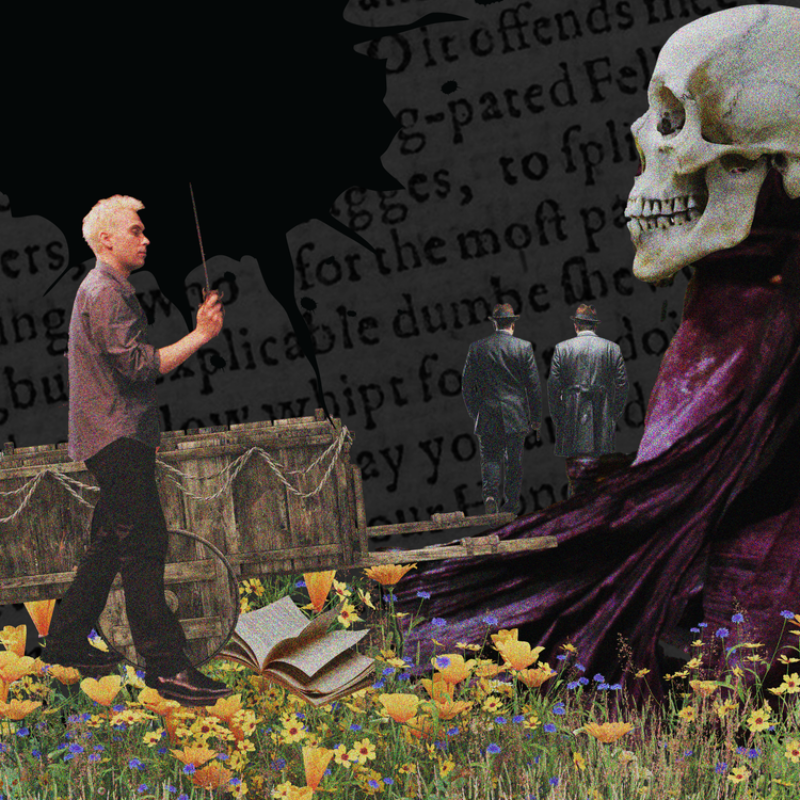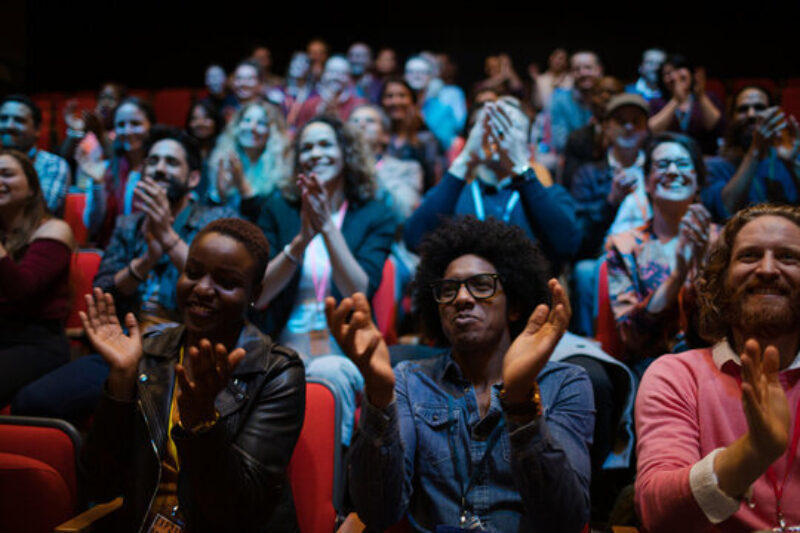Curating Curiosity: an interview with Skirball Cultural Center curator Vicki Phung
Museums are so much more than noiseless halls filled with old, boring paintings. The Skirball Cultural Center has been proving this true for nearly 30 years. From their interactive, all-ages, recycled materials in their Noah’s Ark permanent exhibition, to one of their latest exhibitions,The American Library, I have always loved the Skirball for having fun, unique exhibits that are as whimsical as they are educational.
The first Skirball exhibit I remember going to was a Harry Houdini exhibit. I couldn’t have been older than 6 years old, but I was already enchanted with the grainy black-and-white footage of Houdini in a straitjacket, the life-size replica of his last diving tank, and the colorful old posters that brought this long-dead magician to life. For the next ten years, my family and I would go to the Skirball countless times, exploring and experiencing exhibits ranging from Simon and Garfunkel to Star Trek. Every visit I would learn something new about a figure or movement in history I loved.
Then, when I read about one of the most recent exhibits at the Skirball, The American Library, I knew I had to talk to the curator of the exhibit, Vicki Phung Smith. The first thing that caught my eye about the exhibit was the fact that it was styled like a library — I love books and am a huge supporter of public libraries! The second was that it featured a combination of physical and digital mediums, making it accessible and current. The third was that the artist was Yinka Shonibare, an artist whom my AP Art History class covered extensively, particularly his shocking and referential installation The Swing (After Fragonard). This artist — and his latest exhibit — is very relevant to my life as a student, art appreciator, and someone whose family is the result of many migration stories. I felt drawn to the installation and to its curator, so I sat down with her to learn about Smith’s experiences curating The American Library, and the magical world of museum curation as a whole.
Cyrus: Hi, Vicki. Do you want to start by telling me a little bit about your background and experience with the Skirball?
Vicki: So I've been an associate curator at the Skirball for a year now. I have been working in contemporary art and the art scene in LA for over 15 years. Prior to the Skirball, I worked at other contemporary art galleries in LA. My background and study was to be a studio artist. From a very young age, I was like I'm going to be an artist. And then, after I went to school, I realized that there were things about it, in terms of my temperament and personality, that made me very unhappy. So I pivoted to working with artists and curating as a way that I can still be creative and be surrounded by art. And it was just a much more healthy and happy experience for me. I started my career at contemporary art galleries, and the Skirball is the first nonprofit institution that I worked at. That was a big shift and change. One of the early things the museum director said to me is, ‘your background is contemporary art, but just so you know, the Skirball is not a contemporary art museum. We're a cultural center.’ It’s a broader audience. So I think that was something I was thinking a lot about when curating the show.
Cyrus: I love getting that background on like the differences between working for a museum and curating private collections. That's really cool. So you lead the guided tours for the American Library at the Skirball. What do you love most about leading tours? And what's also challenging about them?
Vicki: Contemporary art is all about keeping up to date. It’s weird to say, ‘oh, I’m a scholar of contemporary art’ like you would for a time period. With, say, post-World War II or 1960s performance art, you can study and research and go into depth. You go into a tour knowing the most on that subject and you’re teaching people. What I love about contemporary art and giving tours for The American Library is that it’s a conversation. I love the way Yinka Shonibare framed it as a library, with 6,000 books. It speaks to this idea that the story of the United States is not one story; there's many stories and not one story is more important than the other. I always learn something new every time I give a tour. I love hearing people’s responses and what they share with me.
Cyrus: The main themes of the American Library exhibit are immigration and diversity. Yet some of the names in the book are people who are anti-immigration. How do you think this contributes to the overall message of the exhibit?
Vicki: I think it’s one of the most evocative, almost punk-rock things that Shonibare does. I think it's really wonderful that alongside first and second generation U.S. immigrants who have made notable contributions to American life and culture, he also presents figures throughout American history that have opposed immigration. This speaks to the nuance and complexity of the ongoing debate. The fascinating thing is, many of these people against immigration are second- or third-generation immigrants. Trump is in the exhibit because his mother was from the UK. It’s great that Shonibare is showing the array of perspectives.
Cyrus: Like many of the Skirball's exhibits, American Library offers digital learning opportunities. What do you like about combining digital museums with traditional museum experiences? And what would you say to people that don't like digital museum installations?
Vicki: Digital options in museums are really important. You have to keep up with the times and present to visitors in ways they’re familiar with, because that’s how you engage the audience. The artist created a website in tandem with the exhibit, where you’ll see names you recognize like Selene Gomez. It’s a digital catalog of all the names in the exhibit at the Skirball. There’s another really cool part of the website called Your Stories, which has an option to share how your family immigrated to the United States, or maybe migrated within the States. It makes the exhibit this ongoing thing -- history is still being written. A lot of our visitors at the Skirball are families with young kids going to see the Noah’s Ark exhibit, so the digital screens are more accessible to them. That doesn’t mean we can just throw out analog options. The American Library also has a story sharing prompt with paper and pencils to make it more physical and accessible to older generations. A combination of digital and analog creates more points of entry for people. It’s been such a successful interactive, with tons of responses.
Cyrus: That, that, what you were talking about, about digital accessibility is a great segue into my next question. The exhibit is interactive, which makes it accessible to people of all ages and walks of life, just something I've always loved about the Skirball. How do you find interactive art enhances or changes the message of an exhibit?
Vicki: We want to appeal to a beastly broad audience as a cultural center. A lot of our exhibits center around not wanting to talk down to the audience or present information in a hierarchical way. Interactives are great because then the visitor becomes a part of the story, and has their own agency in a bigger conversation. It creates investment and buy-in for visitors who think, ‘why should I care?’ I’m always curating for the person who doesn’t care, and make it exciting for them.
Cyrus: Lastly, what do hope visitors - especially teen visitors - take away from this exhibit?
Vicki: I can’t exactly put myself in the shoes of teens today, but when I was young, most of the heroes I looked up to were white men and they didn’t look like me. Through The American Library, I found out about this astronaut Eugene Trinh, the first Vietnamese American astronaut. It was amazing to learn about him because I loved space as a kid, but I only ever learned about the three men who landed on the moon, and I can’t really relate to them. To find a Vietnamese astronaut, even as an adult, was so meaningful. I hope people coming to this exhibit can see themselves and their aspirations.



